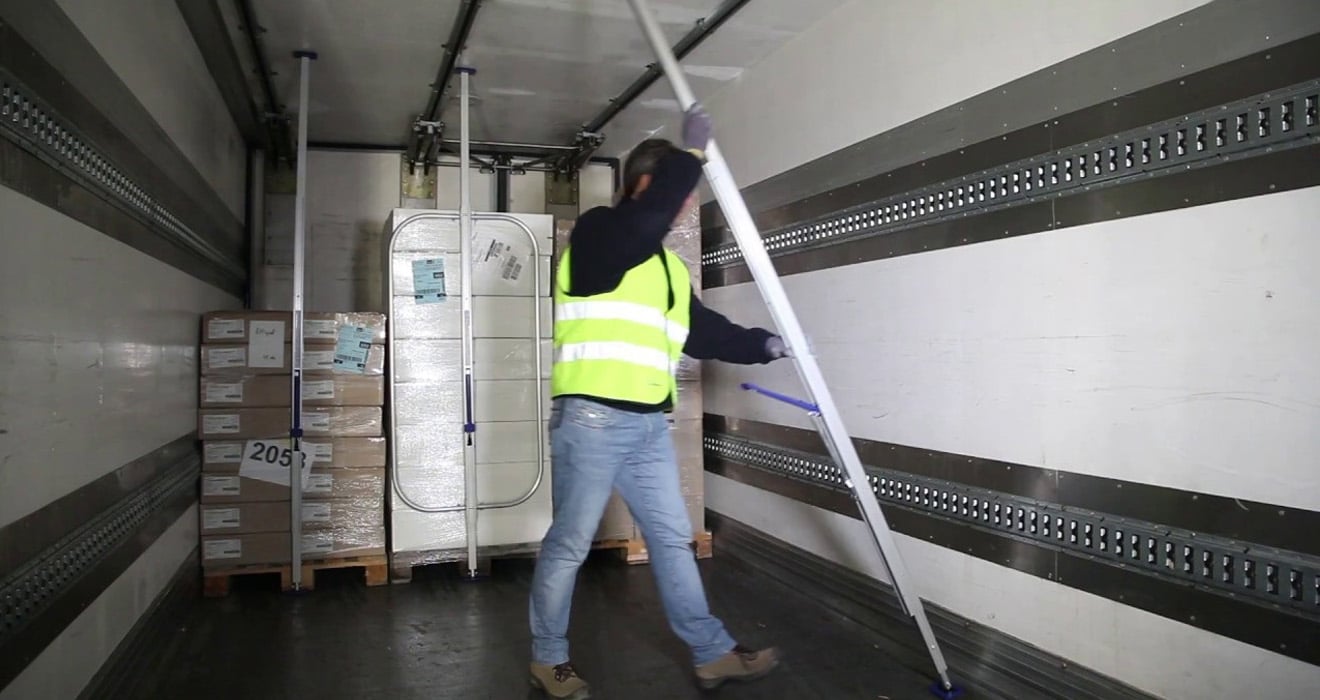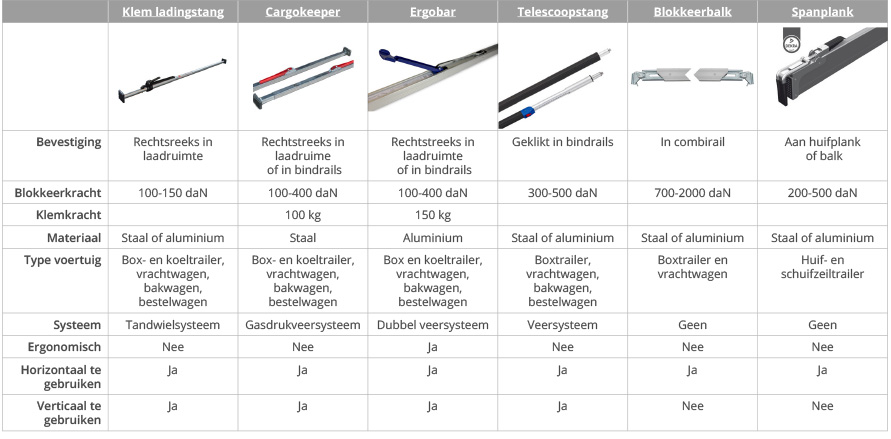Clamp cargo bars
In principle, a clamp cargo bar is a cargo bar that is used if there is no anchor rail in the cargo space of your truck, trailer, box truck or van. With a rubber foot at each end of the cargo bar, it is easy to clamp between two walls or between the floor and roof of the cargo space, thus enabling you to secure your cargo both vertically and horizontally. The rubber feet provide grip and prevent damage to the vehicle, making this type of cargo bar an ideal solution for refrigerated trucks in particular. Clamp cargo bars are also available in a foot/plug (pin) version which is used if there is an anchor rail on the ceiling. Because a clamp cargo bar is self-tensioning, the blocking force is slightly lower (usually between 100 and 150 DaN) than that of other cargo bars and therefore less suitable for very heavy loads.
Cargokeeper with gas spring system
Standard clamp cargo bars have a gear system, making them difficult to tension. A Cargokeeper with gas spring system is therefore a better option to choose.
The gas spring system ensures that the Cargokeeper is continuously under optimum tension. In addition, Cargokeepers with a gas spring system do not develop any wear points! You operate the Cargokeeper with a lever, with the gas spring system ensuring the adjustment of the last 5 cm. These Cargokeepers are also available in a foot/plug and a plug/plug version. For even better cargo securing, you can attach a cargo rack to the Cargokeeper.
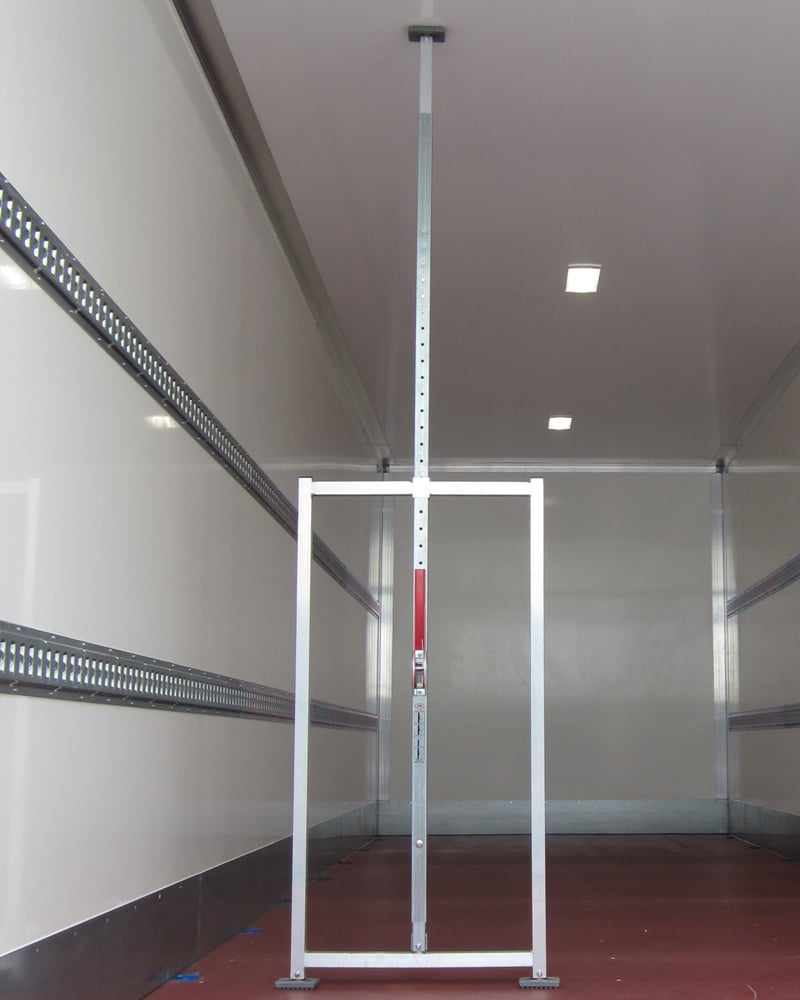
Ergobar cargo bar
Putting cargo bars in and taking them out day in and day out can put significant physical strain on the user. If you want an ergonomic solution for securing cargo in the cargo space quickly and easily, then choose the Ergobar cargo bar.
This aluminium Ergobar cargo bar is the first bar that can be fully operated with just one hand. The secret is the patented two-spring tensioning system: the light-duty spring is strong enough for parking and for pre-clamping. To firmly secure the load, you effortlessly activate the heavy-duty spring using the lever. The Ergobar cargo bar is even EN 12195-1-certified. These cargo bars are also available in a foot/plug and a plug/plug version.
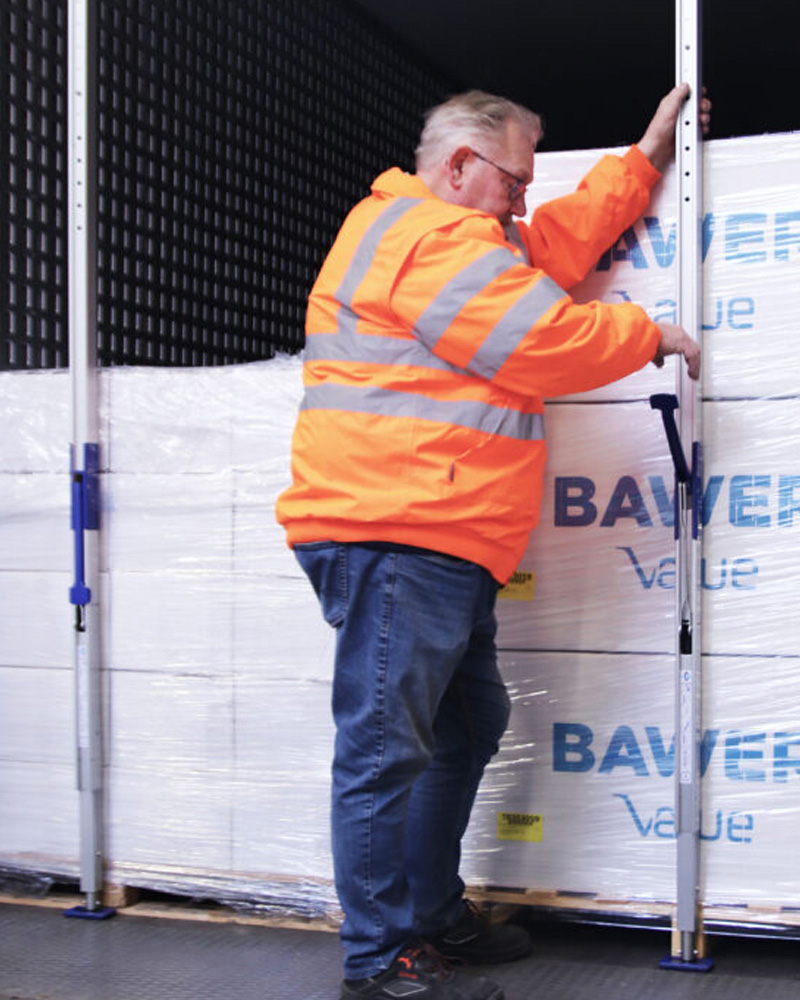
Telescopic bars
When you think of a cargo bar, the first type that usually springs to mind is a telescopic bar. You choose a telescopic bar if you have anchor rails in the cargo space of your truck, trailer, box truck or van and do not transport very heavy loads. You click it into place quickly and easily between 2 anchor rails using the end plugs, either from wall to wall or from floor to roof. You adjust telescopic bars to the right length yourself. You click the end of a telescopic bar into a hole in the rail and then use the spring-loaded system to secure the other end of the telescopic bar by clicking it into place in a rail.
Ther are also separate handles available for operating a telescopic bar. This Easy Grip cargo bar handle makes cargo bars a lot lighter and easier to operate.
Telescopic bars are often too long for a van or small box truck. Because of that, telescopic bars that can be shortened or adjusted are also available. You can have a telescopic bar that can be reduced to your desired size. An adjustable telescopic bar cannot be customised but you can secure it at different lengths.
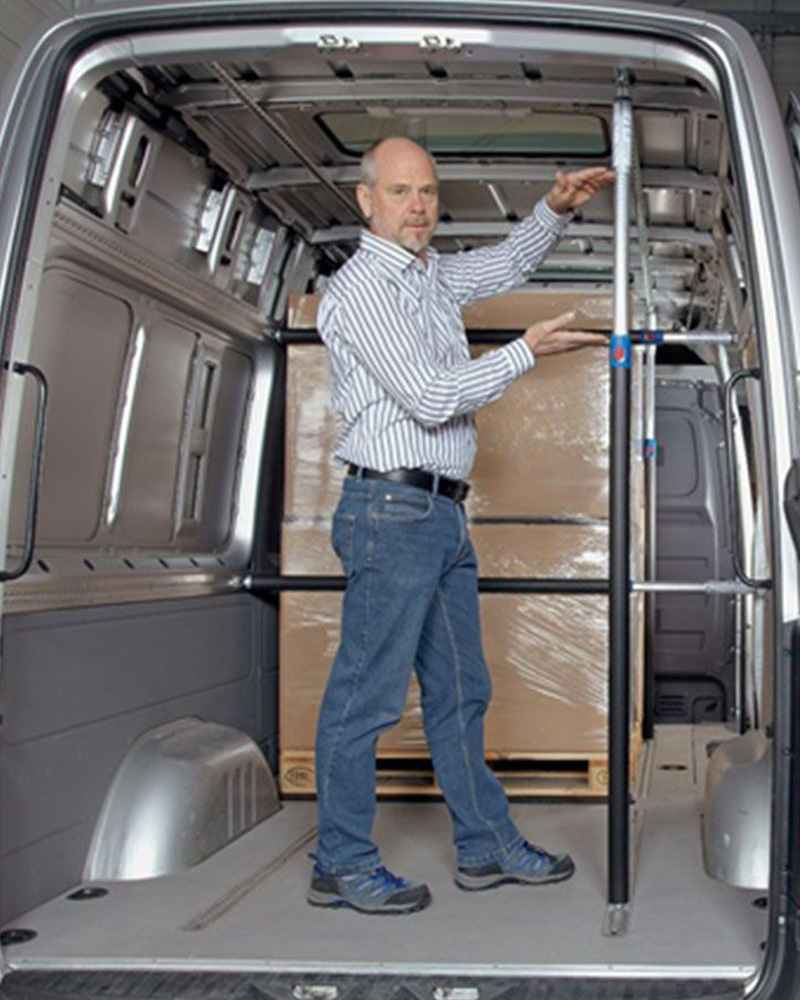
Telescopic bar end plugs
When purchasing a telescopic bar, take into account the diameter of the round holes in your anchor rails as telescopic bars are available with 19 or 24 mm plugs at the end. Another possible option is a combitap which will then make the telescopic bar suitable for rails with both 20 and 25 mm holes. Because of the groove at each end, it can also be used with bar rails.Blocking force
The blocking force of cargo bars is expressed in newtons where one decanewton is equal to a load of one kilo. Telescopic bars have a blocking force of between 250 and 500 daN, making them strong enough to secure most loads.
Blocking bars
Blocking bars – also known as dunnage bars – have a high blocking force, making them extremely suitable for securing heavy loads and roller containers. With blocking bars, you can easily confine cargo: this is also known as form-fit securing. Blocking bars are also suitable for stowing cargo against a wall, for example when you want to transport products that are difficult to stack.Suitable for trucks with anchor rails
Due to the minimum width of 2400 mm, blocking bars – unlike cargo bars – are actually only suitable for trucks and trailers. These bars have steel end pieces with a click system so that you simply click them into place between the (combi) anchor rails in your loading space. You always use blocking bars horizontally, i.e. from wall to wall. Blocking bars are usually adjustable, allowing you to use them at different lengths.Tension boards
Tension boards are used to enclose cargo in tautliners or curtainsided trailers with side panels. Tension boards can be used to divide the cargo space into several compartments and firmly secure the load. Tension boards are also known as intermediate boards, cargo boards or tension bars. You simply click a tension board onto the side boards and secure it using a clamping mechanism. A tension board is positioned horizontally at the end of the trailer or between the goods.EN-12195-1 normering
Bij het kiezen van de juiste ladingstang is het belangrijk om de kwaliteit van de ladingstang in de gaten te houden. Want hoe weet je nu of de aangegeven belasting van de ladingstang ook echt klopt. Zorg in ieder geval dat je altijd ladingstangen koopt die getest zijn volgens de EN-12195-1 normering. In deze EN-12195-1normering staat omschreven aan welke eisen (onder andere) ladingstangen moeten voldoen. Al onze ladingstangen zijn getest volgens deze EN-12195-1 normering.

